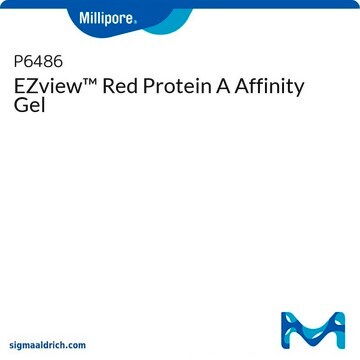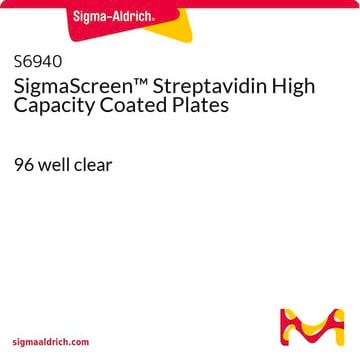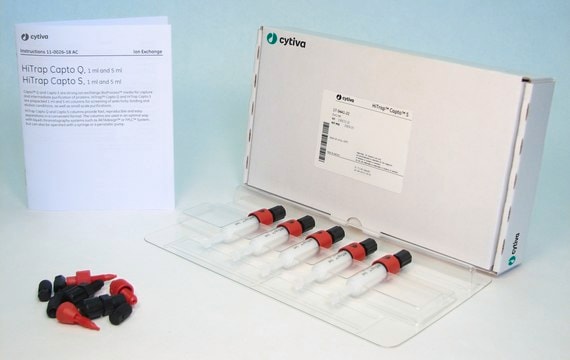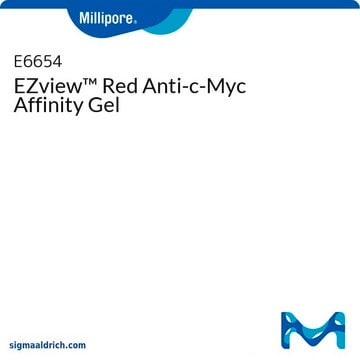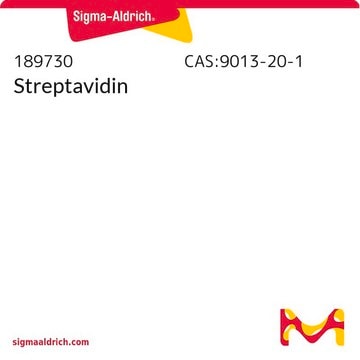E5529
EZview™ Red Streptavidin Affinity Gel
About This Item
Empfohlene Produkte
Form
suspension
Haltbarkeit
1 yr
Methode(n)
western blot: suitable
Matrix
4% agarose
pH-Wert
7.2
Kapazität
~10 μg(biotin per ml of packed gel)
Versandbedingung
wet ice
Lagertemp.
2-8°C
Verwandte Kategorien
Allgemeine Beschreibung
cyanogen bromide-activated 4% agarose beads. It is designed to capture (pull-down) the biotinylated target molecules, such as proteins, peptides, antibodies, nucleic acids, lectins, receptors and ligands.
Anwendung
Leistungsmerkmale und Vorteile
- Increased visibility - Red color reduces risk of incidental aspiration
- Improved recovery of target protein by reduced accidental loss
- Higher reproducibility - More consistent yields
Physikalische Form
Rechtliche Hinweise
Lagerklassenschlüssel
10 - Combustible liquids
Flammpunkt (°F)
Not applicable
Flammpunkt (°C)
Not applicable
Analysenzertifikate (COA)
Suchen Sie nach Analysenzertifikate (COA), indem Sie die Lot-/Chargennummer des Produkts eingeben. Lot- und Chargennummern sind auf dem Produktetikett hinter den Wörtern ‘Lot’ oder ‘Batch’ (Lot oder Charge) zu finden.
Besitzen Sie dieses Produkt bereits?
In der Dokumentenbibliothek finden Sie die Dokumentation zu den Produkten, die Sie kürzlich erworben haben.
Kunden haben sich ebenfalls angesehen
Verwandter Inhalt
Pulldown-Assays, Reagenzien und Protokolle zur Untersuchung von in vitro Protein-Protein-Interaktionen unter Verwendung von Affinitäts- oder GST-Pulldown, Tandem Affinity Purification (TAP) und Co-Immunpräzipitationsmethoden.
Investigate in vitro protein-protein interactions with pull-down assays, utilizing affinity, GST pull-down, TAP, and co-immunoprecipitation methods.
Unser Team von Wissenschaftlern verfügt über Erfahrung in allen Forschungsbereichen einschließlich Life Science, Materialwissenschaften, chemischer Synthese, Chromatographie, Analytik und vielen mehr..
Setzen Sie sich mit dem technischen Dienst in Verbindung.

